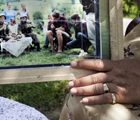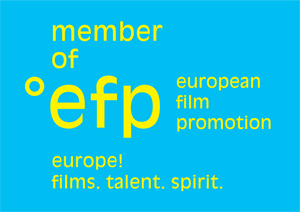The Bosnian Identity (Documentary)
by Matteo Bastianelli
see also
original title:
The Bosnian Identity
directed by:
cast:
Adis Smajic, Naida Vreto Smajic, Nihad Bostandzija
screenplay:
cinematography:
editing:
Daniele Lianka Carlevaro
music:
Damir Imamović Trio, Dario Colozza, Found On Da Street, Simone Dell'Orca
production:
distribution:
world sales:
country:
Italy
year:
2013
film run:
52'
format:
colour
status:
Ready (02/03/2013)
festivals & awards:
- BIF&ST – Bari International Film& Festival 2013: ItaliaFilmFest/Documentari Best Documentary
- Teheran Cinema Verite 201: International Competition
- Bellaria Film Festival 2013
A journey into the memory of Bosnia.
A dream, an interior image of a lost generation, traces of an imperceptible line between what happened and what could be.
Everyday stories of Muslim families, otherwise marked by the war. A continuous voyage of self-awareness amidst the horror of the Srebrenica genocide and the memory of an ethnic cleansing that goes beyond time.
A nation still locked among dreams of release and pressure towards nationalism, in a transition still present between past and future.
Where suffering, hope and black humour outline a common Bosnian identity born, or perhaps only survived, from the ashes of the former Yugoslavia.
DIRECTOR'S NOTES:
A war accumulates such a quantity of conjectures and interpretations capable of almost spontaneously concealing that central nucleus of lost humanity in need of being remembered of which the “Bosnian Identity Project” is nourished. The retractions and negations here meet the obstacle of documentation that exalts the truth into becoming a medium of reflection of reality. A reality narrated through the eyes of the children during that war; those children who, today, look forward with optimism to a new beginning. The consequences of the armed conflict which destroyed Bosnia & Herzegovina in the mid 90’s, are apparent in the people, in their continual search to recuperate self-awareness, more than any overtone, and in the way they define themselves through the choice of language and movements as seen in the central characters of this story. Hope, disillusionment, joy and difficult moments are all told in first person, becoming the un-written script of this work: vicissitudes that speak for themselves. An intimate and delicate tale regarding the complex post-war context in which every individual has lived his life in Bosnia.
To the cauldron of short memory constituted of the fleeting collective imagination fostered by traditional media, the importance of lesser stories over-laps: more in depth and heart-felt. I have chosen to punctuate each chapter of the story with photographic shots that freeze moments and situations with images in movement. The Bosnian Identity is my way of seeing Bosnian and Muslim culture from within that circumnavigation of people and their way of life which have always formed the soul of a multiethnic Bosnia, currently washed away with blood. From a filmic point of view, the characters’ stories in the interviews, all of which were shot using only daylight so as not to mutate their trust in me, are accompanied by scenes from daily life which were filmed using just a handheld steady cam. The extraordinariness of that normal passing of the days, seemingly always the same yet unique, is the scream for life in a land soaked in death: a portrait of the Bosnian society to come, travelling along a steady path in order to rediscover itself, to recuperate from the past in an experiment to find and recognise a common Bosnian identity. Light and shadow illustrate the stories, revealing a thin line bordering on life and death which is present throughout the entire tale. Direct sound preludes the melodies that accompany the look towards a comprehension of dreamlike and visionary moments. Personally, I believe that a war, precisely because it disperses, destroys and is destined to leave deep wounds in both man and the environment, needs an anthropological approach in order to be understood, digested and overcome. But, never forgotten. And, let’s return along the tortuous path of memory where, despite the passing of time, the scars remain embossed on the nation’s skin. Not only on the ruins of the buildings bombed and devastated for all the tourists to see from the windows of their vehicles before being transfixed by the lights of Sarajevo. Neither the bullet holes caused by machine-gun fire nor the white blotches of cement used to fill the voids created by the bombs that look like imaginary constellations dotted all over the Bosnian territory. Most of all, we see those marks in the earth as thousands of hidden identities to be recovered who, after 17 years since the end of the conflict, the International Commission on Missing Persons (ICMP) in Sarajevo, together with the MPI, are still trying to identify. To give them back their names, commit the genocide to memory and permit the families to mourn their dead alongside a befitting grave-side. Indeed, it is the mass graves that are a reminder of the days of deportation. The photographs and the images of the objects found in the mass graves are the connection between past and present: a thin thread which links the life of the victims to that of their families, right up until the time when they are united after identifying their bodies. Thousands of moving hands support the passage of those modest coffins until the remains of a man, like in a synecdoche, are laid to rest representing a part of the whole, the soul of every man missing in the motherland.





